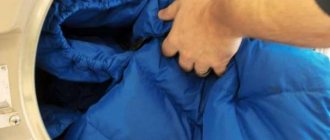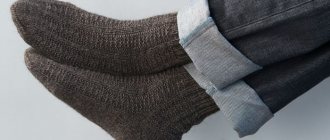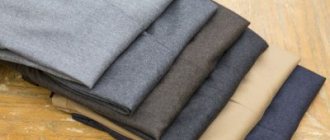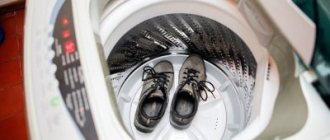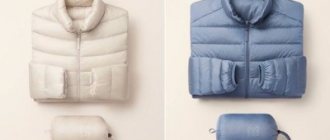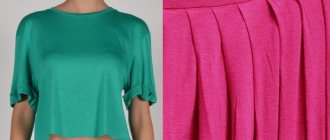Of all types of fabrics, viscose is the most unusual. Why? Because it is natural, but at the same time, produced artificially.
The basis is cellulose. It is obtained by special processing of wood. Then they are cleaned, crushed and dissolved. Next, remove all excess liquid.
What remains is cellulose mass, which is passed through special filters and formed into fibers. Next they are dried and pressed. Properly processed fibers produce the lightest fabric.
The next stage is bleaching. A wide variety of paints are applied to the prepared base. The finished material turns out to be very bright and very similar to silk.
It only requires careful cleaning.
What is good about viscose?
Viscose is similar to silk.
This unique material is loved by many. It retains the decorative properties of silk, but is much cheaper. There are types of fabric with a silk sheen, and there are matte options.
The material dyes very well and has a huge palette of colors. The fabric drapes easily, so it is often used for sewing curtains, tablecloths and bed linen.
Advantages of products made from viscose:
- made from environmentally friendly, breathable material;
- are not electrified;
- very hygroscopic;
- in cool weather they retain heat, and in hot weather they pleasantly cool the skin;
- very soft and smooth to the touch;
- do not provoke allergies.
Recommendations
The following recommendations will help you keep viscose items in excellent condition:
Sorting viscose products before washing is a prerequisite for successful processing.- The best way to machine wash is using a mesh bag.
- To dye viscose, dyes designed for processing natural linen and cotton can be used.
- The use of home recipes for washing is possible with reservations, since the use of vinegar, ammonia, medical alcohol and a number of other substances for processing viscose is unacceptable.
- Placing items made of viscose in the drum of a washing machine together with items made of coarse fabric (jeans, jackets, etc.) is unacceptable.
- For bleaching, you can use oxygen-containing preparations approved for washing viscose.
- If the percentage of viscose in a mixed material is very small, care rules should be chosen in accordance with the type of base fabric.
Despite following all the rules for caring for things, viscose can shrink. This happens, as a rule, with low-quality fabrics that contain other fibers in addition to viscose.
You will find maximum useful information about washing clothes and various fabric products here.
Types and applications
There are several types of such fabric. Each has its own advantages. Products made from such materials differ in characteristics.
- Natural viscose. Very dense when dry and brittle when in contact with water. On the labels you can find the following names: modal (100% composed of wood cellulose), acetate (made from cellulose waste), tencel (based on eucalyptus wood, its characteristics resemble cotton).
- Knitted fabric based on viscose fibers. Good for underwear and children's clothing.
- With the addition of elastane. Stretch without deformation.
- An excellent option for sportswear.
- "Oil". Natural viscose + polyester. The fabric hugs your figure beautifully. Dresses and skirts of various styles are sewn from it.
- "Staple". Practically does not wrinkle. The fibers are very elastic. The material is suitable for cocktail dresses and blouses.
- Quilted viscose. Widely used for patchwork sewing. The fabric is folded in two layers for greater strength.
ARTICLE FOR YOU
How to properly wash woolen items - all types of wool
But there are nuances that must be taken into account when purchasing products made from such fabric. So, wet viscose loses its strength.
When washed aggressively, clothes lose their shape, roll up and shrink heavily. The fibers wrinkle quickly. Therefore, recently, when creating fabric, elastane is often added.
The material stretches well, but does not stretch. The material does not tolerate direct sunlight. Modern technologies involve the use of special filters and antioxidants.
Mixed fabric deformation
Products made from 100% viscose are practically not subject to deformation (shrinkage). But to improve the thermal conductivity and density of the product, other fibers are added to the composition, for example wool or acrylic, cotton, polyester. Mixed fabrics may already have problems with shrinkage and maintaining the shape of the product.
Viscose fabric
What can happen:
- if wool is added, then temperature changes and hot water are contraindicated, the product may shrink by 2 times;
- You shouldn’t wash polyester and viscose in a machine, the item wears out faster, and pills appear after washing in the drum;
- if the composition contains acrylic or 100% cotton, the main enemy is hot water, it will be impossible to restore the original size.
Proper washing and drying will preserve the attractive appearance of the product and the excellent characteristics of viscose fabric.
Washing rules
Separate clothes into white and colored ones.
Before washing a viscose product, it is necessary to carry out preparation. Read the information on the label carefully. All recommendations must be strictly followed.
Organize colored items into categories. Divide clothes into white, black and colored. Use your hands or a soft brush to remove any stuck-on debris or dried-on dirt.
Clean your pockets. Metal and paper money, business cards, and advertisements can not only tear thin fabric, but also leave paint stains.
Turn things inside out, fasten all the zippers and buttons. If the item will spin in the machine, it is better to place it in a special laundry bag.
Drying and ironing products
As already mentioned, the optimal conditions for drying viscose fabrics are in a horizontal position, on a terry towel, on a dryer, around which there is air circulation. You should not dry things: in the sun; on or near the battery; in an automatic dryer. What about ironing? You can iron such material by following simple rules:
- Fast.
- At the lowest possible temperature.
- From the wrong side.
- Through a layer of clean cotton white cloth.
- Without the use of steam (steam is used to stretch or shrink the product).
If folds and creases in the fabric are very visible and cannot be ironed normally, the fabric can be slightly moistened using clean water from a spray bottle.
Hand washing method
To remove stubborn stains, soaking is required. Pour a little hand washing powder into a bowl of warm water (not higher than 30 - 35 degrees).
Shake it until the granules dissolve. It is preferable to use gel. After half an hour, you can start washing.
No friction. This is the main rule. Soap foam should be carefully rubbed into the fabric with light massaging movements.
After this, rinse thoroughly. Remove water from a clean product by squeezing it lightly with your palms. Do not twist the fibers or crumple the fabric, otherwise the item will lose its shape. Excess moisture can also be shaken off.
How to prevent viscose from shrinking?
Very often housewives complain about the shrinkage of viscose items. Such troubles can be prevented. You just need to follow some instructions.
Rules for successful washing:
- It is necessary to know the exact composition of the fabric. Viscose in its pure form practically does not shrink. But with impurities it’s a different matter. This is especially true for wool. The higher its percentage, the stronger the shrinkage will be. And polyester promotes the formation of pills.
- Water for washing and rinsing should be the same temperature (no more than our body temperature).
- Automatic drying is not permitted. The same goes for radiators and batteries.
- High drum speeds combined with mechanical spin will turn the item into a stretched rag.
- Never use alkaline detergents
- Be careful when washing viscose curtains. Shrinkage is especially visible on them.
ARTICLE FOR YOU
How to wash tulle: skirt, dress, tulle, curtains, in the washing machine and by hand
If the entire thing shrinks, try to save it. Put on still wet clothes and walk around until completely dry. You can also iron the product with steaming, but only at a minimum temperature.
During the process, you need to lightly stretch the fabric in different directions. If your favorite blouse or dress has become noticeably shorter, hang it on a trempel and stretch it out a little.
Rugs made from this material are very popular. You can get them wet only as a last resort. Try the classic knockout first.
Next, collect the dust with a vacuum cleaner, after removing the hard brush. It will tear the fibers. Heavily dirty areas can be cleaned with a soft sponge and soap.
Just don't rub too hard. To prevent the carpet from yellowing, wipe it with a weak solution of vinegar. After drying, vacuum again.
How to prepare things for washing
Before you begin the cleaning process for viscose clothing, you need to do some preparation to avoid ruining the items. To do this you should:
- Study the labels. They usually indicate the permitted actions during washing, drying and ironing.
- Sort things according to color. Remember that you can only wash items of the same color together: white, colored and black separately.
- Pre-clean. If there is debris, dirt or plant debris stuck to the fabric, pick it out by hand.
- View pockets. All items located there must be removed.
- Turn out. This item will protect the outer side of the fabric from excessive mechanical stress, color fading and possible fading.
- Fasten the zippers and buttons. If these finishing details are present on things, they need to be connected.
- Prepare a laundry bag. If you choose the machine method, this device will definitely come in handy. You can replace it with a regular white pillowcase.
In order to better understand what methods of influencing fabric are allowed, look at the main signs that may appear on the label:
| 100% viscose | This means that the thread is entirely made of cellulose and has no foreign impurities (cotton, linen, etc.) |
| Allows water temperature up to 40 degrees | |
| Prohibits bleaching | |
| Allows ironing at medium temperatures of about 150 degrees. Most often suitable for clothes made from mixed fabrics | |
| Allows normal dry cleaning. Any dry cleaner has a list of acceptable reagents. | |
| Indicates that clothes can be dried vertically |
How to add a little viscose?
When washing, viscose can behave unpredictably.
Sometimes you have to act paradoxically. More often we are afraid of fabric shrinkage. But cases are different.
When washed, the item may behave unpredictably and become one size larger. You can return to your usual look by breaking the rules a little.
It is worth considering the composition of the fabric:
- With a bang. The item is washed in hotter water and wrung out in the machine at medium speed. Then place it in hot water with conditioner for 10 minutes. Dry either in the machine or on a heated surface.
- With synthetic thread. Wash as described above. Squeeze at maximum speed, dip in ice water and dry.
- With wool. Follow the same principle. Increase the water temperature to 50 - 60 degrees, and the number of revolutions should be more than five hundred. Such shock therapy will “shrink” the item two sizes.
How to wash viscose by hand: choosing temperature and powder
After you have carefully studied the tag, completed all the preparatory steps and made sure that you are looking at 100% viscose, wash by hand in the following sequence:
- Filling the container with water. Its temperature should not exceed 30 degrees.
- Adding detergent. Please note that it is not advisable to pour the selected substance onto fabrics, so it must first be completely dissolved.
- Soak. It is recommended to soak excessively soiled clothing for 10-30 minutes.
- Wash. Movements should be light and massaging. The fibers do not tolerate strong friction and excessive effort.
- Rinsing. This is repeated many times to prevent the slightest sedimentation of the soapy substance.
- Push-ups. You don't need to do it too hard. It is enough to put things in the sink and lightly press them against the sides. Do not twist, as this may damage the fabric.
- Collapse. If you really need to speed up the drying process, wrap the selected item of clothing in a terry towel, roll it up loosely, blotting off excess water, and repeat the procedure if necessary.
Viscose items respond remarkably well to liquid detergents designed specifically for the care of delicate and thin fabrics. Among them are:
- Perwoll Wolle & Feines Faserpflege Advanced;
- CRYSTAL balm with lanolin;
- Stork EXTRA-soft.
You can also choose products for washing wool, viscose and silk threads. They may contain lanolin, which can provide the necessary care and restore softness to the fabric, and a special polymer will preserve the color of the fabric for a long time.
Tip: if your water is too hard, you can add 1 tbsp during the washing process. ammonia, and when rinsing - the same amount of vinegar. This will soften the water.
Washing gels
Powders contain alkali and phosphates. Granules may not dissolve well. Therefore, it is better to use gels. Choose products for delicate fabrics.
It would be good if the gel contained lanolin. All information about this is on the label. It is acceptable to use air conditioning.
But folk remedies are not always suitable. For example, vinegar. Viscose is very sensitive to it.
Ammonia will help soften the water.
ARTICLE FOR YOU
How to properly wash staple clothes and linen: in a washing machine and by hand
The most important
General rules for washing viscose in any way:
- no hot or cold water, optimal temperature from 30 to 36 degrees;
- washing powder, or better yet liquid detergent for washing delicate fabrics, must be thoroughly dissolved in water;
- soak for half an hour;
- Friction and twisting during washing are unacceptable;
- rinse in plenty of water at the same temperature;
- squeeze lightly without effort, the water should drain from the product itself;
- Do not rub stains; they will come off during soaking.
Bleaching viscose
White products made from this fabric lose their brightness over time. There are several ways to restore your snow-white look.
But it’s worth mentioning right away what you absolutely cannot do:
- boil the item or wash it in hot water;
- use chlorine bleaches.
Another problem is yellow spots. They appear with prolonged wear. Laundry soap will help remove them.
Wet the item in lukewarm water and lather with laundry soap. Let things sit for an hour. Then you can wash and rinse.
A solution of ammonia will have the same effect. For 10 liters of water take a tablespoon of 25% or 4 tablespoons of 3% ammonia.
Salt (600 g / 10 l) will help to refresh a gray shirt.
Aspirin will remove traces of sweat. Two tablets are dissolved in half a glass of water. A couple of hours before washing, apply the solution to the contaminated areas using a sponge or cotton pad.
Fat is broken down by table salt and chalk. Curdled milk and fresh milk fight ink well.

